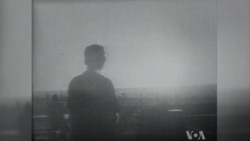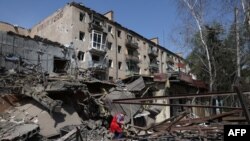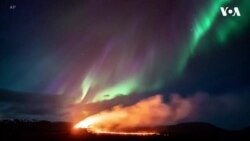NEW YORK —
North Korea this month set off its third nuclear test device of the past decade. And like the previous tests, this one created vibrations in the earth that could be detected around the world. Now, seismologists - scientists who normally study earthquakes - are analyzing the explosion's impact.
It’s been almost 70 years since the atomic age was unleashed. The United States bombed Hiroshima and Nagasaki, which led to the end of World War II. While the memories of the devastation still linger, the events also opened up an international race for nuclear superiority.
Eight countries today consider themselves nuclear-weapon states. A ninth, Israel, neither confirms nor denies it possesses the bomb. The most recent entry is North Korea. It conducted its third nuclear underground test on February 12th.
Seismologists around the world had their monitors almost literally light up when the latest North Korean nuclear test took place. Won-Young Kim and Paul Richards have monitored all three.
“The first one was magnitude 4.3, the second one was 4.7, and this one was 5.1. When it becomes greater than five there is a good chance a lot of seismographic stations throughout the world will be able to record it," said Kim.
North Korea is the only country to test nuclear weapons in the 21st Century. These scenes show North Korean engineers working in a nuclear lab. According to seismologists, the latest test is still smaller than the weapons dropped on Japan in 1945.
A Chinese monitoring station, approximately 350 kilometers north of the test site, was the first to record the explosion. In seconds, its reverberations reached seismologists worldwide.
At this unassuming campus in Palisades, New York, Richards and Kim analyzed the data.
“The seismograph is a recording of how the ground moves at different times," said Richards. "The preliminary waves, or the primary waves, the first arriving waves, are very strong and impulsive. There are very weak waves in this part of the seismograph. You hardly see them at all here.”
“We know exactly where they carried out nuclear test, and the signals are very simple, just “boom,” compared with earthquakes cracking long fault," said Kim.
The seismologists point out that nuclear devices are usually tested in shallow caves, approximately 1,500 meters-deep. Earthquakes come many kilometers below the earth’s surface. The difference is easy to detect. In North Korea, according to Kim, they used the same area, but not the same site for their tests.
“In this case what we know that they had two tunnels drilled, two tunnels, one they call East, and the other West. And we believe this one is from the west side."
While the North Koreans celebrate their feat, Kim and Richards say that this latest test, even though small when compared to most American nuclear weapons, is very serious and that the device can do incredible damage if used as a weapon.
Video was edited by Daniela Schrier.
It’s been almost 70 years since the atomic age was unleashed. The United States bombed Hiroshima and Nagasaki, which led to the end of World War II. While the memories of the devastation still linger, the events also opened up an international race for nuclear superiority.
Eight countries today consider themselves nuclear-weapon states. A ninth, Israel, neither confirms nor denies it possesses the bomb. The most recent entry is North Korea. It conducted its third nuclear underground test on February 12th.
Seismologists around the world had their monitors almost literally light up when the latest North Korean nuclear test took place. Won-Young Kim and Paul Richards have monitored all three.
“The first one was magnitude 4.3, the second one was 4.7, and this one was 5.1. When it becomes greater than five there is a good chance a lot of seismographic stations throughout the world will be able to record it," said Kim.
North Korea is the only country to test nuclear weapons in the 21st Century. These scenes show North Korean engineers working in a nuclear lab. According to seismologists, the latest test is still smaller than the weapons dropped on Japan in 1945.
A Chinese monitoring station, approximately 350 kilometers north of the test site, was the first to record the explosion. In seconds, its reverberations reached seismologists worldwide.
At this unassuming campus in Palisades, New York, Richards and Kim analyzed the data.
“The seismograph is a recording of how the ground moves at different times," said Richards. "The preliminary waves, or the primary waves, the first arriving waves, are very strong and impulsive. There are very weak waves in this part of the seismograph. You hardly see them at all here.”
“We know exactly where they carried out nuclear test, and the signals are very simple, just “boom,” compared with earthquakes cracking long fault," said Kim.
The seismologists point out that nuclear devices are usually tested in shallow caves, approximately 1,500 meters-deep. Earthquakes come many kilometers below the earth’s surface. The difference is easy to detect. In North Korea, according to Kim, they used the same area, but not the same site for their tests.
“In this case what we know that they had two tunnels drilled, two tunnels, one they call East, and the other West. And we believe this one is from the west side."
While the North Koreans celebrate their feat, Kim and Richards say that this latest test, even though small when compared to most American nuclear weapons, is very serious and that the device can do incredible damage if used as a weapon.
Video was edited by Daniela Schrier.










